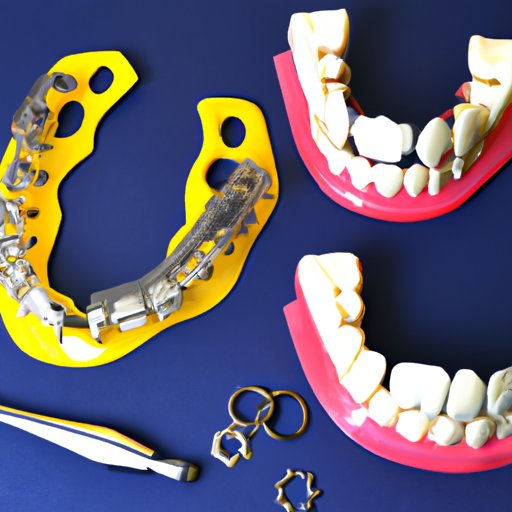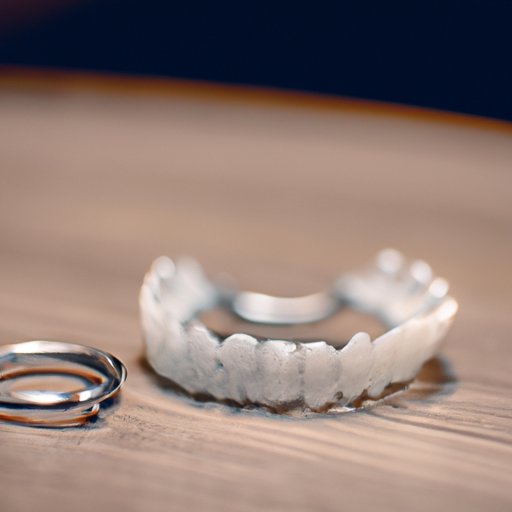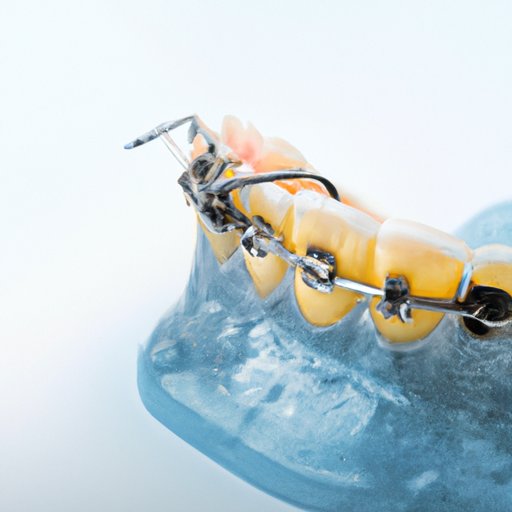Introduction
A retainer is an orthodontic device used to help maintain the alignment of teeth after braces have been removed. It can also be used to correct minor misalignments and keep teeth in place. Although retainers are designed to last for many years, they may need to be replaced due to wear and tear or damage. Replacing a retainer can be expensive, but it’s important to understand the cost implications and how to make the process more affordable.
Cost Comparison: How Much Does It Cost to Replace a Retainer?
The cost of replacing a retainer depends on several factors, such as the type of retainer, the material used, and the dentist or orthodontist who performs the procedure. The cost can range from $50 for a basic plastic retainer to more than $500 for a custom-made retainer. Generally, the more complex the retainer, the higher the cost.
There are several types of retainers available, each with its own set of costs associated with it. Traditional plastic retainers are the most common and least expensive option, typically costing between $50 and $150. Clear retainers, which are made from transparent acrylic and fit over the entire arch of the teeth, are slightly more expensive, ranging from $100 to $300. Custom-made metal retainers are the most expensive option, typically costing between $400 and $500.
It’s also important to factor in the cost of regular maintenance and repair. Traditional plastic retainers often require frequent adjustments by a dentist or orthodontist, which can add to the overall cost. Clear retainers may need to be replaced more frequently, as they can become stained or worn out over time. Metal retainers usually last longer but may need to be adjusted or repaired if they become loose or damaged.

Exploring the Financial Impact of Replacing a Retainer
Replacing a retainer can be a significant financial investment, especially when considering the long-term costs. In addition to the cost of the retainer itself, there are also potential costs for regular maintenance and repair. Regular maintenance is important to ensure that the retainer fits properly and does not cause any discomfort. Repair costs can also add up if the retainer is damaged or broken.
There are several ways to reduce the financial burden of retainer replacement. One option is to purchase a retainer care kit, which includes the necessary tools and supplies to clean and adjust the retainer on a regular basis. Another option is to purchase a pre-made retainer, which typically costs less than a custom-made retainer. Additionally, some insurance plans may cover part or all of the cost of retainer replacement.

A Comprehensive Guide to Replacing Your Retainer and the Costs Involved
When it comes time to replace a retainer, there are several steps to take. First, it’s important to visit the dentist or orthodontist to determine the best type of retainer for your needs. Then, prepare for the cost of retainer replacement by researching different types of retainers and comparing prices. Finally, consider purchasing a retainer care kit to help reduce the long-term costs of replacement.
When choosing a type of retainer, it’s important to consider the pros and cons of each option. Traditional plastic retainers are the most affordable option, but they may require frequent adjustments. Clear retainers are more aesthetically pleasing but are more prone to staining and wearing out. Metal retainers are the most durable and comfortable option, but they are also the most expensive.
Finally, it’s important to prepare financially for the cost of retainer replacement. Many insurance plans offer coverage for orthodontic procedures, including retainer replacement. It’s also possible to find discounts or special offers from dentists or orthodontists. Additionally, there are several ways to make retainer replacement more affordable, such as purchasing a retainer care kit or purchasing a pre-made retainer.

What You Need to Know About Replacing a Retainer and the Cost Implications
Replacing a retainer is an important step in maintaining good oral health. It’s important to understand the importance of proper retainer care and the potential risks of not replacing a retainer. Not replacing a retainer can lead to tooth misalignment, increased risk of cavities and other dental problems, and even speech and chewing difficulties.
Investing in a new retainer can also have benefits. A new retainer can provide a better fit and more comfortable experience, as well as improved oral hygiene. Additionally, a new retainer can help prevent further tooth misalignment and other dental problems.
Breaking Down the Cost of Replacing a Retainer
Replacing a retainer can be expensive, but there are several ways to reduce the cost. One option is to do it yourself, which can save money in the short-term but may require more frequent adjustments or repairs. Professional retainer replacement is more expensive, but it ensures a proper fit and eliminates the need for frequent adjustments or repairs. Additionally, some insurance plans may offer coverage for retainer replacement.
Another way to reduce the cost of retainer replacement is to purchase a retainer care kit. These kits include the necessary tools and supplies to clean and adjust the retainer on a regular basis. They are relatively inexpensive and can help extend the life of the retainer and reduce the need for professional maintenance or repair.
Conclusion
Replacing a retainer is an important step in maintaining good oral health. It’s important to understand the cost implications and potential financial burden associated with retainer replacement. Different types of retainers and associated costs should be considered, as well as potential insurance coverage and ways to make retainer replacement more affordable. With the right information and preparation, retainer replacement can be a more manageable financial investment.
(Note: Is this article not meeting your expectations? Do you have knowledge or insights to share? Unlock new opportunities and expand your reach by joining our authors team. Click Registration to join us and share your expertise with our readers.)
